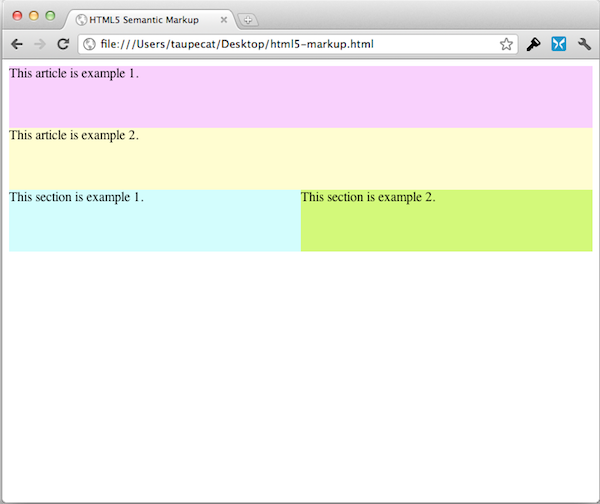HTML5 goodness is all around us now, with its semantic nature in elements such as <article> and <section>. But when it comes to using HTML5 in websites for the U.S. federal government, there are some major obstacles in the way.

The first, unsurprisingly, is Internet Explorer. Only within the past year have many federal agencies upgraded, and that was only going from version 6 to version 8. IE8, sadly, is incapable of rendering many of HTML5’s semantic tags without the help of JavaScript.

That leads us to our second problem: Section 508. By way of review, Section 508 is the well-intentioned, but somewhat antiquated law that mandates certain accessible practices for government websites. It is in major need of updating, but until that happens, web developers in the federal sector need to follow the law that is currently on the page.
The exact provision that gives us pause when trying to implement HTML5 is Subpart B, §1194.22, Rule (l) which states:
When pages utilize scripting languages to display content, or to create interface elements, the information provided by the script shall be identified with functional text that can be read by assistive technology.
This means that the JavaScript trick that’s standard practice for developers to use to get Internet Explorer < 9 to render the new HTML5 semantic elements are prohibited for the purposes of Section 508.
The alternative? Use classnames that correlate to the semantic elements for easier find and replace at a later date. For example, <article> would become <div class=”article”>.
It’s not the optimal situation, but it’s a workable solution.
With all due respect, I think you’ve misinterpreted how Section 508 impacts the use of HTML5 & related technologies.
The fact is that even on older browsers not capable of rendering HTML5 without JavaScript help, assistive technologies can still identify functional text. The use of the “HTML5 Shim” or even Modernizr does not change that.
To your specific example, is no more readable to assistive technologies than .